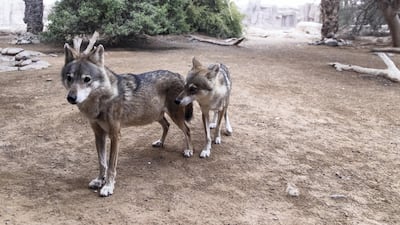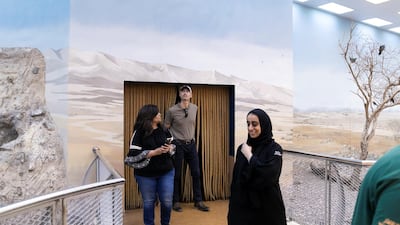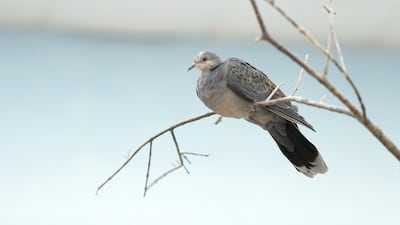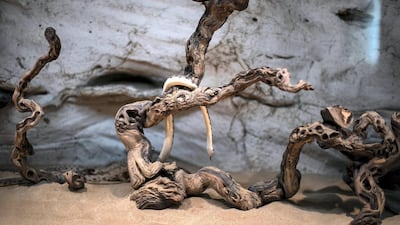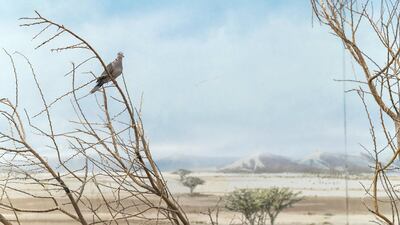A delegation of conservation experts from the United States have embarked on a fortnight-long tour of the Emirates to learn about UAE wildlife.
Senior figures from organisations including Disney, the San Diego Zoo and SeaWorld are among a 13-person party currently touring some of the country’s leading natural sites and attractions.
It is hoped that the trip, organised by the UAE embassy in Washington DC, will lead to new collaborations in conservation between the nations, while also spreading awareness of UAE’s natural heritage and environmental preservation efforts.
The group, currently in the first week of their trip, have already met with Dr Thani Al Zeyoudi, the UAE Minister of Climate Change and Environment, and have so far spent time in Dubai and Sharjah.
“The UAE is doing a lot in terms of wildlife management conservation, environmental conservation, and a lot of people are not very aware of this,” said Dana Al Marashi, head of cultural diplomacy at the UAE embassy to the US.
“So we thought this would be a great opportunity to bring leading professionals here to meet with their counterparts, learn about what the UAE is doing, and our hope is to be able to create partnerships, internship opportunities and general understanding of the work being done.
“Even though we’re halfway across the world from each other, there are a lot more similarities between our two cultures than there are differences. Our hope is by bringing these delegations, that we’re able to build bridges of cultural understanding.”
The visit was organised after the embassy approached the Association of Zoos and Aquariums (AZA), a US organisation which runs a globally-respected accreditation scheme for wildlife attractions. It is hoped that similar visits will run in future.
The Arabian Oryx conservation programme, which successfully saw the species reintroduced to the wild, was an example of an area in which US bodies could learn from the UAE, Dan Ashe, president and chief executive of the AZA, said.
“The idea of the trip is to begin a dialogue about wildlife conservation and how we might be able to learn about what’s being done in the UAE and also how we might help people here learn,” he said.
“I have to admit, I’ve never been here before and the diversity of wildlife and habitat is surprising, because you do think of it as a desert, arid ecosystem. So you expect to see that, but you don’t expect to see the breadth of mangrove, wetland and related species. It’s eye opening.”
The group arrived in the UAE over the weekend and have so far visited sites including the Dubai Turtle Rehabilitation Project, and wetlands and Arabia’s Wildlife Centre in Sharjah. In the coming days they will move on to Abu Dhabi and Al Ain.
Another member of the delegation, Dwight Scott, director of the San Diego Zoo, which attracts almost four million visitors every year, also said it was the first time he had visited the UAE.
“It’s really a relationship building opportunity, and of course we’re all looking for areas in which we can collaborate,” he said
“Areas like deserts still have incredible wildlife, so I expected to see that, and we have relationships in the region so we know there is diversity here. But it is perhaps underestimated, a lot of people don’t know about it.
“It’s been great so far and we can’t wait to get through the rest of the programme. We’re here to learn as well, so as we’re meeting colleagues and viewing facilities, we’re taking best practices back to the San Diego Zoo.”
Mark Penning, vice president of animals, science and environment at Disney, said that as a South African who had travelled in the Middle East before, he had been acting as an informal “tour guide” for his American-born colleagues.
“There are some incredible things going on here, it’s a special place,” he said. “I’m pretty sure none of my colleagues here have been to this region and what I have seen most among them is awe.
“The modern zoos and aquariums today realise and understand that we are there to help people learn, but also to protect animals in the wild. If we’re not doing conservation work out in the field and protecting those animals out in the wild we’re not doing our job.
“So the opportunities to collaborate on a bigger scale are really important. For us, having seen all these facilities and the nature spaces, it puts us in a much better place to find opportunities and I’m very excited about that.”


